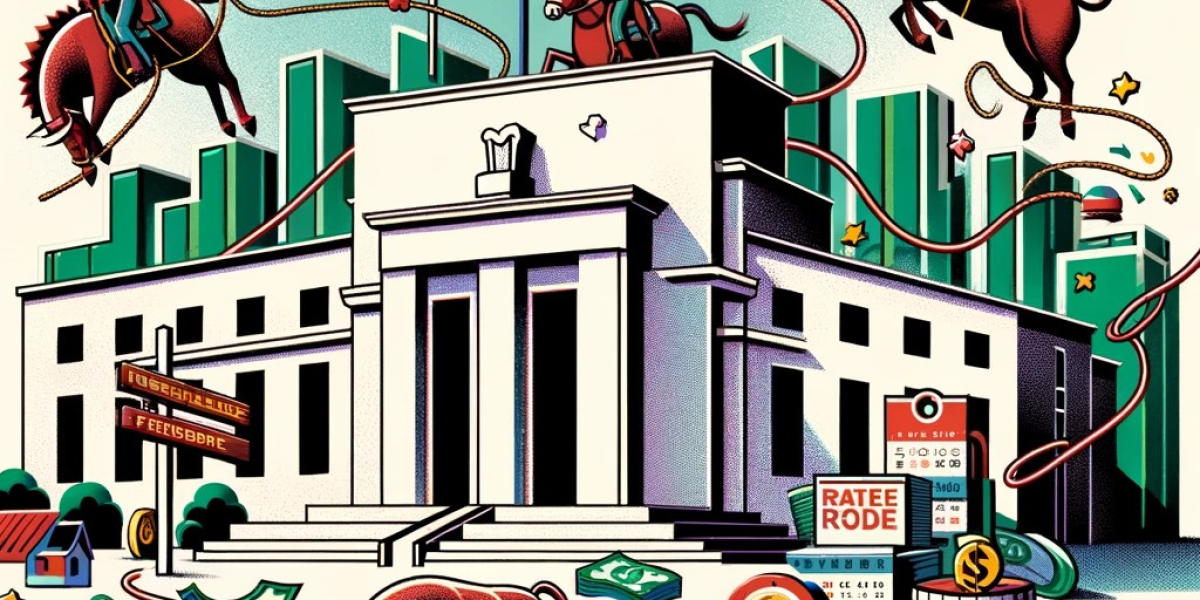As the calendar pages flip to 2024, the global financial arena is abuzz with a new trend: central banks, spearheaded by the US Federal Reserve, are shifting gears towards lowering interest rates. This pivot marks a stark contrast to the previous years’ aggressive rate hikes, signaling a fresh chapter in economic policy.
2022 and 2023 were the stage for some of the most assertive monetary tightening in recent history. Central banks worldwide hiked rates to curb the surging inflation that followed pandemic-era stimulus measures. However, as inflation begins to bow out, these financial titans are easing their grip, with rate cuts emerging as the new mantra.
The Fed’s Strategic Shift
The Fed, the trailblazer of global monetary policy, is at the forefront of this shift. From the corridors of power in Washington, signals of a 75 basis-point cut have emerged, painting a picture of a central bank in transition. This development is intriguing, considering the hawkish tone the Fed maintained through much of the recent past, which hinted at even higher rates through most of 2024.
The Fed’s move is not in isolation. The European Central Bank (ECB) and the Bank of England, albeit more cautiously, are also expected to join the rate-cut bandwagon by mid-2024. Emerging economies are not lagging, with countries like Brazil and Russia planning steep cuts to foster economic growth.
A Global Trend: Easing the Economic Squeeze
The reason for this global easing lies in the softening of inflation. Skeptics might argue that inflation rates are still distant from central banks’ targets, necessitating continued vigilance. Yet, the undeniable cooling of both headline and core inflation is paving the way for a more lenient monetary approach. This shift is critical for reducing the burden of borrowing costs on households and businesses, fostering a more conducive environment for economic recovery.
The Fed, with its influential federal funds rate currently pegged at 5.5%, is anticipated to bring it down to 4.25% by the end of 2024. This projection aligns with market expectations, which lean towards a series of quarter-point rate cuts commencing as early as May.
Yet, the Fed’s path isn’t without its nuances. Fed Chair Jerome Powell and his colleagues have emphasized a cautious approach, hinting that any decision to lower rates will be tightly tethered to incoming economic data. The Fed’s stance is akin to a tightrope walk, balancing between the need to support growth and the imperative to keep inflation in check.
Across the Atlantic, the ECB and the Bank of England are also navigating similar waters. The ECB, currently holding a deposit rate of 4%, is projected to reduce it to 3.25% by year-end, despite their reticence to openly discuss rate cuts. The UK’s economic scenario is equally dynamic, with speculation rife about the Bank of England possibly trimming its 5.25% bank rate to 4%.
In Asia, the Bank of Japan stands out with its unique challenge of ending the world’s last negative rate. Governor Kazuo Ueda is expected to tighten policy, a stark contrast to global trends, highlighting the diverse economic landscapes central banks operate in.
Emerging Economies: Diverse Paths in a Converging World
Emerging economies, each grappling with their unique challenges, are also part of this rate-cut rodeo. Countries like Mexico, traditionally more cautious, are expected to start easing monetary policies. The People’s Bank of China, facing pressure from a faltering domestic market, is likely to reduce its rates, while the Reserve Bank of India is projected to lower its repurchase rate from 6.5% to 5.5% by year-end.
Central banks in Brazil and Russia are set for more aggressive rate cuts, with Brazil’s Selic target rate anticipated to drop from 11.75% to 9%. In contrast, the Central Bank of Nigeria, battling inflation at 28.2%, is expected to hike rates to restore stability.
The global monetary landscape in 2024 is a tapestry of diverse strategies and approaches. Central banks, led by the Fed, are navigating a delicate balance between fostering growth and maintaining inflation targets. The year ahead promises to be a defining one, as the world watches these financial institutions perform their rate cut rodeo, each with its unique style, in a bid to steer their economies towards recovery and stability.







